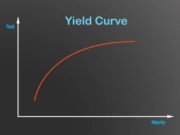Definition
The Pareto principle states that, for many events, roughly 80% of the effects come from 20% of the causes. Management consultant Joseph M. Juran suggested the principle and named it after Italian economist Vilfredo Pareto, who noted the 80/20 connection while at the University of Lausanne in 1896. In his first work, Cours d’économie politique, Pareto showed that approximately 80% of the land in Italy was owned by 20% of the population. The Pareto principle is only tangentially related to Pareto efficiency. Pareto developed both concepts in the context of the distribution of income and wealth among the population. Mathematically, the 80/20 rule is roughly followed by a power law distribution for a particular set of parameters, and many natural phenomena have been shown empirically to exhibit such a distribution. It is an axiom of business management that “80% of sales come from 20% of clients”.
What is the Pareto Principle?
When you look at the statistics of soccer teams, you will likely notice that out of the starting 11 players, two or three are responsible for scoring most goals, typically those who play in the forward and striker positions. This is not a rule, and you could argue that those players are expected to score the majority of goals by virtue of their positions, but all soccer players will try to score when given the chance. It is not unusual to see two or three out of 11 players on a soccer team scoring 80% of goals; this is actually very prevalent, and it is even more prominent in the National Basketball Association, where you have stars such as Lebron James of the Los Angeles Lakers and James Harden of the Houston Rockets putting up 80% of their teams’ points during the minutes they are on the court. This is a situation that can be observed in business, organizational management, and even in everyday life, and it is known as the Pareto Principle.
Understanding the Pareto Principle
Vilfredo Pareto was an Italian economist and thinker whose work was concentrated on the topic of efficiencies as they relate to organizations and microeconomics. While conducting research as the University of Laussane in Switzerland, Vilfredo Pareto observed that approximately 80% of Italian land ownership in the late 19th century was distributed among 20% of the population. Pareto was concerned with matters related to wealth distribution in his native Italy, but he did not formulate the Pareto Principle, which posits that 80% of effects arise from 20% of causality. Joseph M. Juran, a respected management consultant, was the first to express this principle as the 80/20 rule. What Joseph M. Juran noticed in his analysis of Pareto’s work was that a few vital elements, typically 20%, of a system will generate 80% of significant productivity.
Can the 80/20 Rule be Proven?
Pareto situations are routinely observed in socioeconomic analysis. In 1989, for example, the United Nations issued a report showing that the global gross domestic product is distributed as follows: The richest 20% of the world’s population generate 80% of global income.
Whenever a system is subject to organizational rules in order to function properly, the work of Pareto seems to apply as well. In the United States, the Occupational and Safety Health Administration has made the following observation in industrial and construction workplaces: 20% of known risks cause 20% of on-the-joib injuries. Finally, technology giant Microsoft has made the following observation with regard to various versions of the Windows operating system: If quality control engineers are able to patch 20% of the most commonly reported bugs, 80% of computing errors would be eliminated. There are numerous situations in which the 80/20 rule of sparsity can be observed, but it would not be reasonable to prove it each and every time with significant adjustment of parameters and variables.
Understanding Pareto Analysis
Since the 80/20 rule can be applied in many business and economic activities, it makes perfect sense to use it for analytical purposes. Let’s say you manage a sales department with 20 employees who are actively engaged in direct selling; when you apply Pareto analysis, there is a good chance that you will notice four members of your sales team are bringing in 80% of results, and this can be visualized in a chart. A bar chart where the causes are horizontally displayed on the x-axis and the occurrences are vertically displayed on the y-axis can show you the outcomes of Pareto analysis. The chart should be arranged in a way that presents causality in descending order; in the aforementioned example of a sales department, you want to display the most sales first. To calculate cumulative counts, divide the number of individual sales by the total sales and multiply by 100. Now you can display a second y-axis that displays the percentages in descending order. The line that forms above 80% will correspond to the vital few salespeople, which in the example above are the top members of your sales team. The bottom line of conducting Pareto analysis is that you can learn more about certain elements that you should focus on; in other words, you should foster the 20% of things that are crucial in any project or activity. This is not to say that you should be bothered by what may be perceived as an imbalance. If you choose to fire 16 members of your sales team and replace them with salespeople who share certain qualities with your top performers, chances are that you will increase overall sales, but Pareto analysis may still show the 80/20 rule.
Other 80/20 Rule Situations
It can be argued that the 80/20 rule can extend beyond the socioeconomic realm. Just about any organizational situation can be viewed through the Pareto lens. Let’s run through a few examples:
The Pareto Rule in Marriage
We should not expect that our relationships will provide 100% of what we want and need out of life; however, we should strive to get 80% of happiness from our partners. The remaining 20% may cause a feeling of emptiness, and then again it is up to us to do what is necessary to fill this smaller void. A marriage counselor will tell you that dedicating 80% of your efforts to your relationship is healthy, but you should leave 20% of your life to individual pursuits.
The 80/20 Rule of Dieting
Even though following a diet plan that is 100% healthy and nutritious is highly ideal, if 80% of the food you consume is healthy, you can take certain liberties with the remaining 20%, which can be indulgences in portions that are 80% smaller than healthy meals.
The 80/20 Rule of Fitness
Elite athletes will spend 80% of their time working out at high levels of intensity, followed by 20% of light exercise to cool them down. If you want to stay in shape, you should dedicate 80% of your effort to low-intensity exercise, but this should be boosted with 20% of strenuous exercise.
Pareto Principle FAQ
What is the Pareto principle and give an example?
How do you use the Pareto Principle?
How do you explain a Pareto chart?
How do I create a Pareto chart in Excel?
How do you use the 80/20 Principle?
What is the 80/20 rule in investing?
What is the 80/20 rule in a relationship?
Further Reading
- Any non-welfarist method of policy assessment violates the Pareto principle –
www.journals.uchicago.edu [PDF] … a referee for comments and the John M. Olin Center for Law, Economics, and Business … The view that certain principles are valued per se—regardless of their consequences for … the conflict that he adduced as raising questions about the underlying appeal of the Pareto principle … - The Pareto principle: its use and abuse –
www.emerald.com [PDF] … a referee for comments and the John M. Olin Center for Law, Economics, and Business … The view that certain principles are valued per se—regardless of their consequences for … the conflict that he adduced as raising questions about the underlying appeal of the Pareto principle … - The Pareto managerial principle: when does it apply? –
www.tandfonline.com [PDF] … a referee for comments and the John M. Olin Center for Law, Economics, and Business … The view that certain principles are valued per se—regardless of their consequences for … the conflict that he adduced as raising questions about the underlying appeal of the Pareto principle … - Notions of fairness versus the Pareto principle: on the role of logical consistency –
heinonline.org [PDF] … a referee for comments and the John M. Olin Center for Law, Economics, and Business … The view that certain principles are valued per se—regardless of their consequences for … the conflict that he adduced as raising questions about the underlying appeal of the Pareto principle … - Goodbye pareto principle, hello long tail: The effect of search costs on the concentration of product sales –
pubsonline.informs.org [PDF] … a referee for comments and the John M. Olin Center for Law, Economics, and Business … The view that certain principles are valued per se—regardless of their consequences for … the conflict that he adduced as raising questions about the underlying appeal of the Pareto principle … - Liberalism, independent rights and the Pareto principle –
www.sciencedirect.com [PDF] … a referee for comments and the John M. Olin Center for Law, Economics, and Business … The view that certain principles are valued per se—regardless of their consequences for … the conflict that he adduced as raising questions about the underlying appeal of the Pareto principle … - Pareto 80/20 law: derivation via random partitioning –
www.tandfonline.com [PDF] … a referee for comments and the John M. Olin Center for Law, Economics, and Business … The view that certain principles are valued per se—regardless of their consequences for … the conflict that he adduced as raising questions about the underlying appeal of the Pareto principle …


































